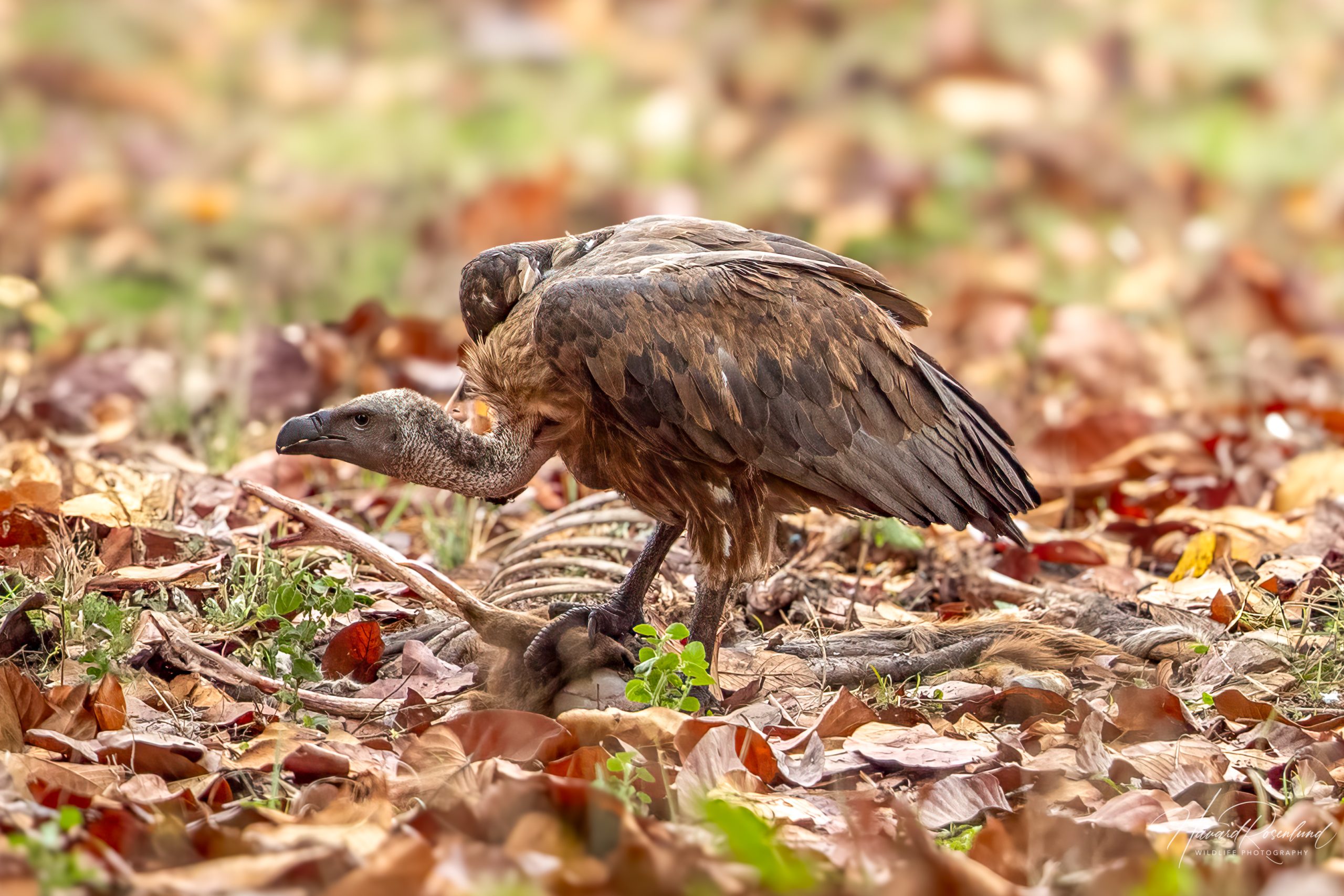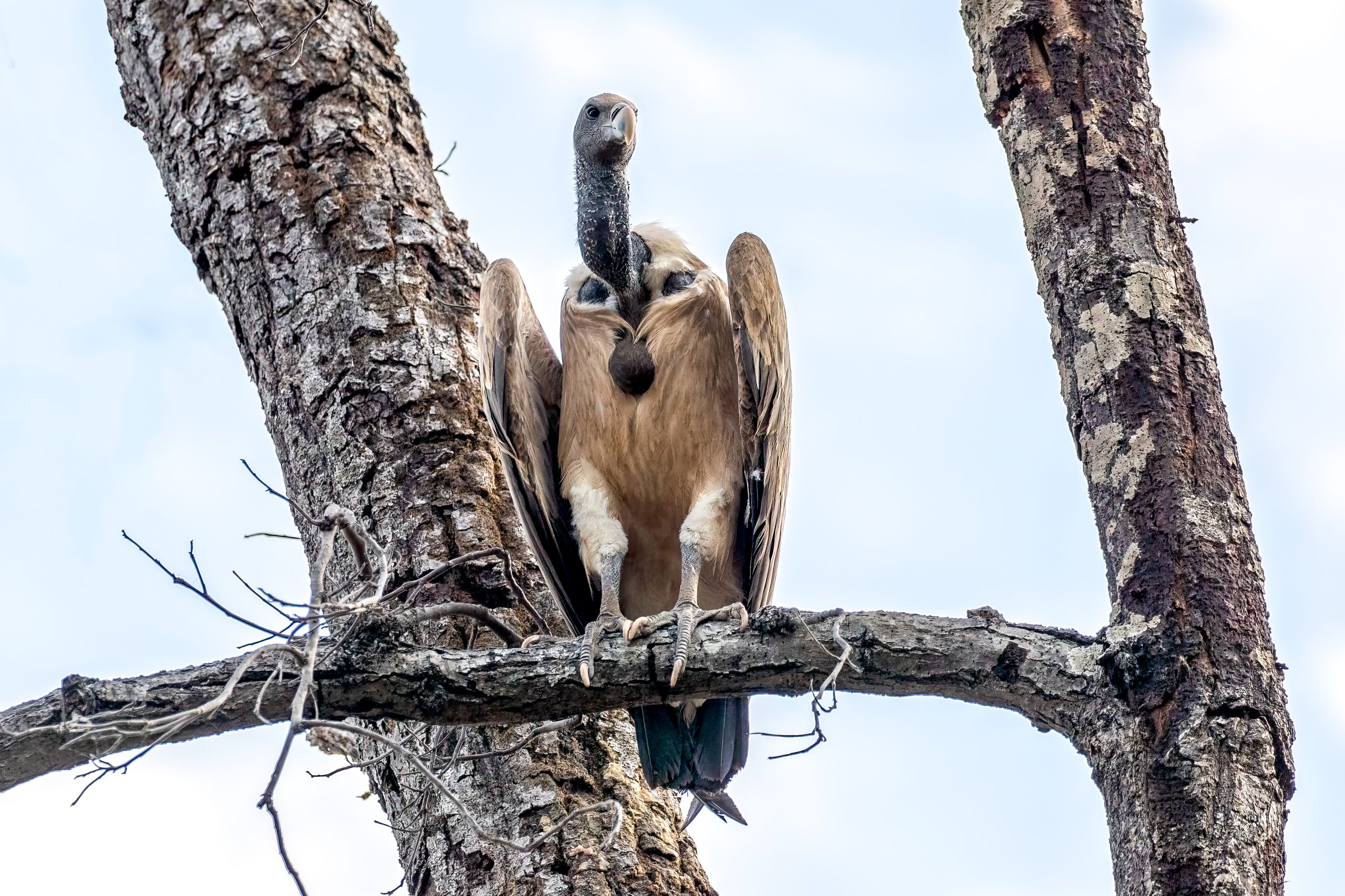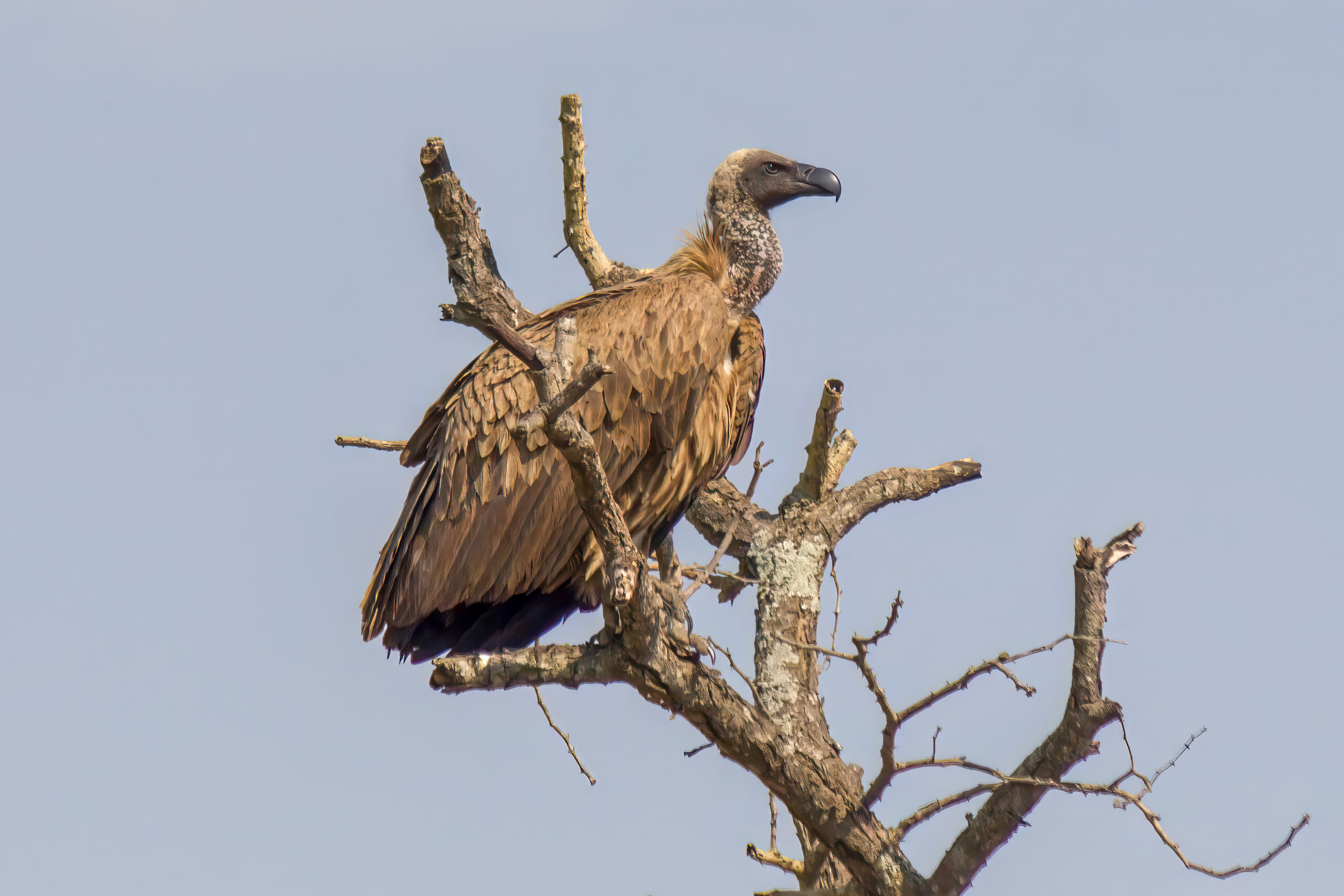Description
The white-rumped vulture (Gyps bengalensis) is a large bird of prey native to South and Southeast Asia. It has a stark white rump and white neck ruff, contrasting with its dark brown or black body plumage. Adults have a dark naked head and neck, tinged in pink, with a greyish-black beak. It has conspicuously white underwing coverts, seen when wings are stretched out or in flight. Juveniles are brown, often with a pale downy neck with a darker brown stripe along its nape. These vultures typically measure around 75-90 cm (30-35 in) in length with a wingspan of 205-220 cm (80-87 in). They differ from similar species, such as the Indian vulture (Gyps indicus), by their darker plumage, white neck ruff, and more prominent white rump patch.
Diet & habitat
White-rumped vultures are scavengers, primarily feeding on carrion. They play a critical ecological role in consuming animal carcasses, which helps prevent the spread of diseases. These vultures are found in open landscapes, including savannas, grasslands, and semi-desert regions, often near human settlements where they can easily access food. They are also seen in woodlands and forested areas, especially near rivers and wetlands where food availability is higher.
Behavior
White-rumped vultures are highly social birds, often seen in large groups, especially at feeding sites. They have a strong sense of sight and can detect carcasses from great distances. These vultures are known for their aggressive feeding behavior, often engaging in fierce competition with other scavengers. They are relatively silent, except during feeding or nesting, where they may produce grunts and hisses.
Nesting
The breeding season for white-rumped vultures varies geographically but generally falls between October and March. Pairs may breed alone or in colonies. They typically build large stick nests on cliffs or in tall trees, sometimes close to human settlements. The nests are often reused year after year. The female usually lays a single egg, which both parents incubate for about 45-50 days. Once hatched, the chick remains in the nest for several months, receiving care and feeding from both parents until it fledges, typically at around 3-4 months of age.
Status
The white-rumped vulture was once one of the most common large birds of prey in the Indian subcontinent, but has experienced one of the most rapid population declines of any bird species worldwide. Estimates suggests a decline of over 99% in the last few decades and it is now listed as critically endangered on the IUCN Red List. The main reason for its rapid decline is the poisoning from the veterinary drug diclofenac, which is toxic to vultures feeding on treated livestock carcasses. Conservation efforts are ongoing, including captive breeding programs and banning diclofenac in some regions, but the species remains at risk.










